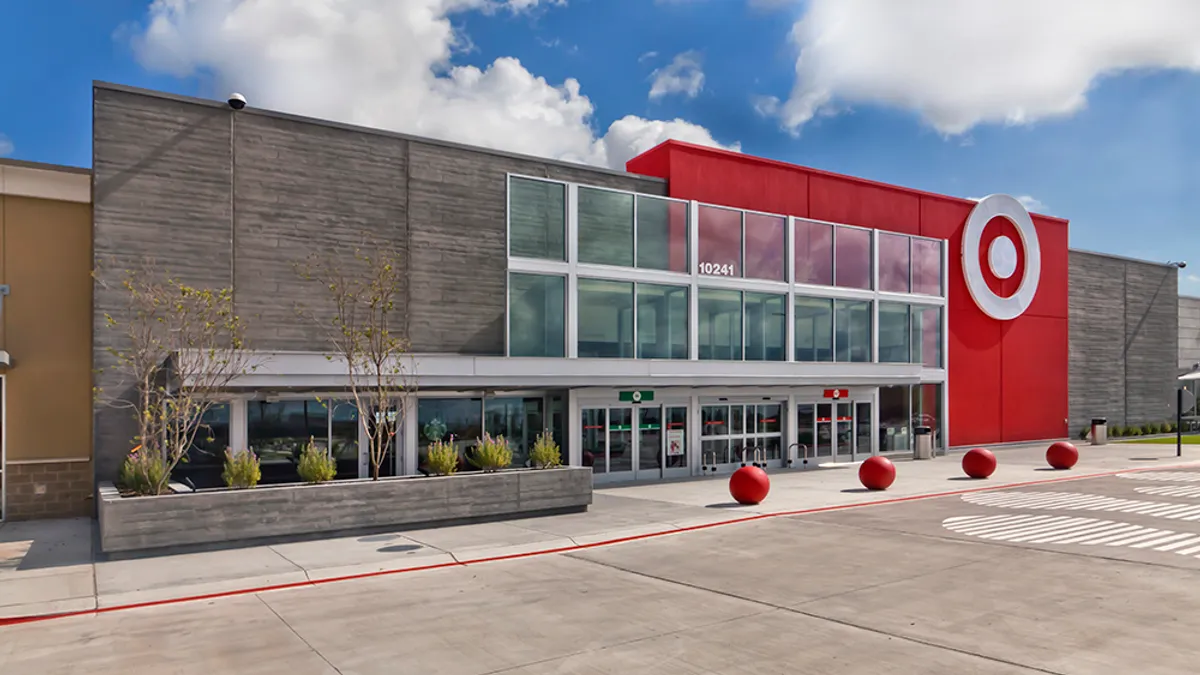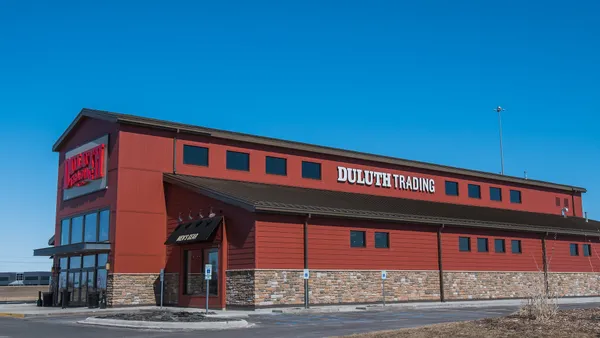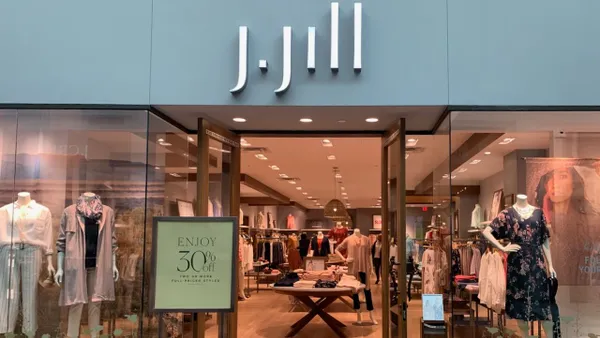Dive Brief:
- Target's pre-pandemic investments in supply chain and fulfillment infrastructure are paying off for the retailer and allowing it to sustain growth as consumer buying habits change, Michael Baker, senior research analyst at D.A Davidson, wrote in an analyst note.
- "Target was among the earliest retailers to understand the power of store assets in the omni-channel world," the note reads. "[Target] is now well positioned to take advantage of changing consumer preferences."
- Omnichannel abilities acted as a differentiator as stores closed, particularly for food retailers, according to the note. Walmart, BJ's, Costco and Target "have seen outsized grocery sales during the pandemic, significantly supported by their omni-channel initiatives," Baker wrote.
Dive Insight:
Target executives, quarter after quarter on earnings calls, have endorsed their store-centric fulfillment model, at times to dubious analysts who were unsure how the strategy would work at scale.
Now, as retailers have adopted omnichannel strategies at breakneck speed, industry stakeholders are realizing the retailers that invested in their supply chains and inventory visibility across channels were in the best position to quickly pivot to curbside pickup, ship from store and other methods to capture sales while stores closed.
"If there is any good for retailers that has come out of this pandemic, it’s that they were forced to speed up their omni-channel investments and initiatives," Baker wrote. Kohl's scaled store fulfillment and ship from store in weeks, Joann flipped BOPIS to curbside pickup in a few days, and Home Depot added curbside pickup in 48 hours.
Target has been on a "long-term journey in operations to completely transform our supply chain and fulfillment infrastructure" that included putting stores at the center of fulfillment, COO John Mulligan said on the retailer's earnings call in May. The retailer added inventory planning software during the third quarter of 2019 to keep store inventory levels low enough to keep backroom operations flowing smoothly — but not so low that it could lead to stockouts. Upstream, the retailer developed a robotics system that sorts inventory at the warehouses into boxes assigned to store aisles, allowing store workers to unpack directly onto the shelf.
Baker said Target's realization of the "power of store assets" long before the pandemic put the retailer in a position to sustain sales despite store closures. In April, Target's digital sales increased 282% year over year, and stores fulfilled 80% of digital orders, CEO Brian Cornell said on the retailer's earnings call in May. But the significant sales increase did lead to stockouts rising "well above where we’d like them to be," Mulligan said.
Same-day services grew 278% in the first quarter of 2020, "and that was all fulfilled by our stores," Cornell said.
"While we incurred extra costs to accommodate this incredible surge in digital fulfillment, we expect to gain a long-term benefit in terms of guest loyalty," Cornell said, without going into specifics on the costs related to digital fulfillment. Executives did point to costs related to higher pay for store workers, extended paid leave and additional cleaning procedures.
Baker expects Target's 2022 sales to rise nearly 15% over 2019. Target executives will hold their second quarter earnings call Wednesday morning, which could shed further light on the results from the retailer's omnichannel investments and fulfillment strategy.















